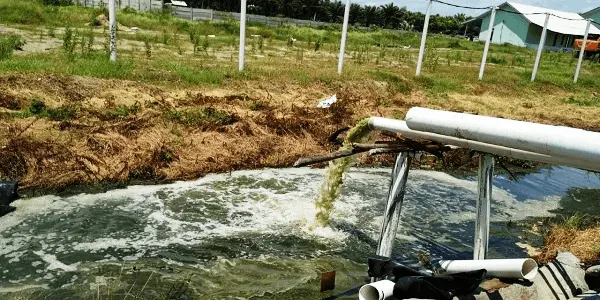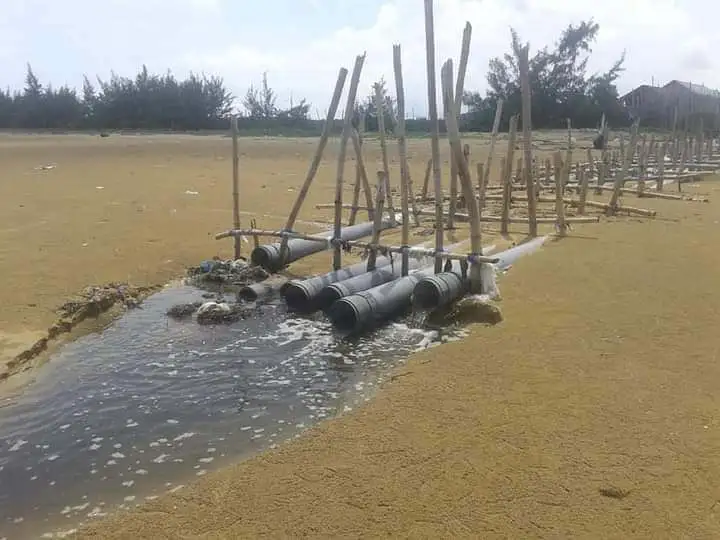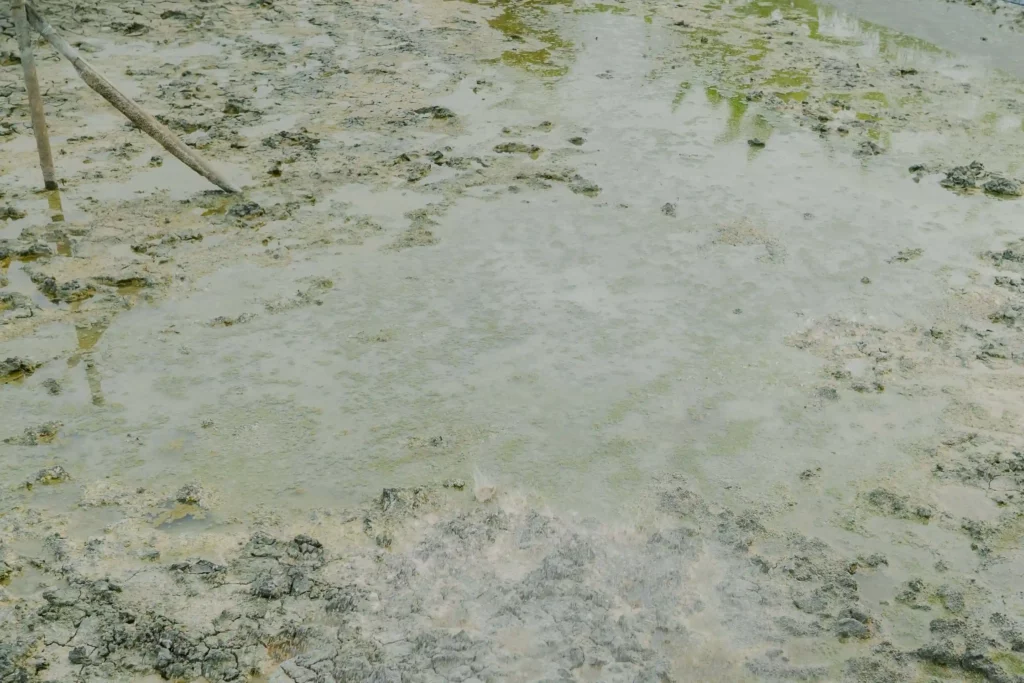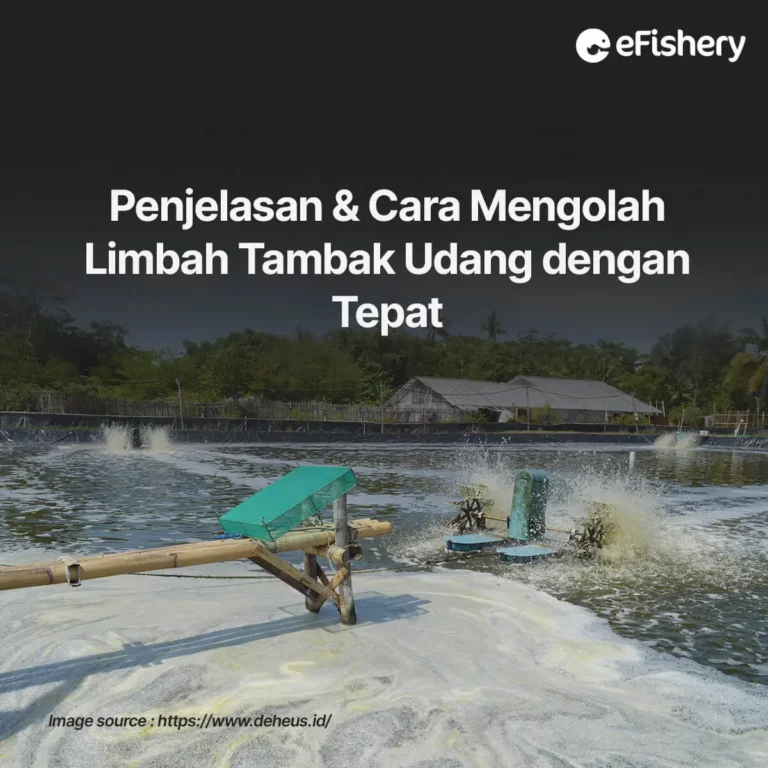Hello Mr/Ms Shooters! You may already be familiar with shrimp pond waste. However, did you know that shrimp pond waste will have a very bad impact if it is just left alone and not treated properly? Come on, read this article to find out how to manage shrimp pond waste!
Forms of pond waste

Shrimp pond waste is liquid waste originating from shrimp farming ponds consisting of 35% of organic waste, 15% of feed residue, and 20% of shrimp metabolic waste. When viewed from its shape, shrimp pond waste is divided into 2, namely liquid waste and solid waste. Come on, know the characteristics of each of these wastes!
1. Liquid Waste
Shrimp pond wastewater contains nitrogen and phosphorus which can actually increase water fertility in small amounts. However, if the volume is large, this waste will turn into a poison that can poison the shrimp and the environment around the pond where this waste flows. Usually, the levels of pollutants contained in wastewater depend on the length of shrimp cultivation, stocking density, pond substrate, and pond construction. Liquid waste generally has levels Biological Oxygen Demands (BOD), Total Suspended Solids (TSS), organic matter, high degree of turbidity, nitrogen and phosphate.
2. Solid Waste
In shrimp farming, solid waste is waste in the form of suspension and sludge carried by liquid waste. Solid waste is more dangerous than liquid waste because it has very high BOD levels. The BOD level of liquid waste that is usually found is only <100 mg/L. However, when he examined the sludge he was carrying (solid waste), the BOD levels found could reach 1,000 mg/L. The same thing was also found in the TSS and turbidity parameters.
If the stocking density of shrimp in ponds is higher, the pollutant levels of liquid waste and solid waste discharged into the environment will increase. High stocking densities have consequences for the resulting waste load due to the high retention of feed nitrogen and phosphorus in growing shrimp.
Is Shrimp Pond Waste Dangerous?

In large quantities, pond waste is very dangerous because the waste will undergo a decomposition process (decomposition) that produces harmful nitrites and ammonia. Waste can cause bad environmental pollution because there are still many shrimp farmers who don't really understand the techniques for processing it. Especially if the pond is located near the coast. The discarded waste can flow to the beach and disrupt the balance of the coastal ecosystem because it contains a lot of organic elements that come from leftover shrimp feed.
Apart from the things mentioned above, here are other dangers from the presence of large amounts of shrimp pond waste:
- Increase the cost of facilities and infrastructure treatments sea water
- Increase the population of pathogenic microorganisms (bacteria, protozoa, viruses)
- Increasing the prevalence of shrimp disease
- Makes the alkalinity number unstable
- Increase the rate of nitrification
- Increases the rate of phosphate release by sediments
- Interrupt the process plankton bloom in the pond
- Triggers the growth of algae toxins
Causes of Shrimp Pond Waste
The increasing shrimp population has an impact on the amount of waste produced. Shrimp pond waste arises because the remaining feed and shrimp feces settle at the bottom of the pond and are wasted together with the pond water. Increasing waste will undergo a decomposition process (decomposition) which will produce high levels of nitrite and ammonia.
Waste from shrimp farming is organic waste, especially from feed, faeces, and dissolved materials which, if discharged into the waters, will disrupt the ecosystem in these waters. This is because shrimp pond waste contains 92% nitrogen, 51% phosphorus, and 40% other organic matter. If left alone and not treated properly, these materials will cause eutrophication, water pollution caused by excess nutrients in aquatic ecosystems.
How to Overcome Shrimp Pond Waste

The benefits of shrimp farming are indeed very tempting. However, if the demand for shrimp increases, the waste that will be produced will also be higher and more harmful to the environment if it is not managed properly. Shrimp waste must be treated with improved quality so as not to pollute the environment when disposed of.
Waste water treatment is generally divided into 3 processing techniques, namely mechanical, chemical and biological treatment. However, the application of a chemical Wastewater Treatment Plant (WWTP) must be avoided because it can harm the environment and threaten food security in the vicinity. The following are WWTPs that are carried out mechanically and biologically:
1. Mechanical Wastewater Treatment
Mechanically, waste treatment is carried out through a process of settling or sedimentation which aims to reduce TSS. Sedimentation is done by filtering or by slowing the speed of the water flow so that it is no more than 20 m/s.
The use of filters in settling tanks is quite effective in reducing the solids content of wastewater. If successful, this could reduce damage to pumping systems and units of sludge separation equipment such as weir, block valve, nozzle, channels, and pipes.
2. Wastewater Treatment with Biological Processes
Biological process is the process of decomposing pollutant organic compounds of wastewater with technology mostly using the activity of microorganisms. Broadly speaking, biological wastewater treatment is divided into three, namely:
- Biological Processes with Suspended Cultures
This system is carried out by decomposing waste water pollutant compounds using the activity of microorganisms. Later, the microorganisms will be cultured suspended in a reactor which is regularly spread over the wastewater. Some examples of treatment processes with this system include: standard activated sludge process, step aeration, contact stabilization, extended aeration, ditch system oxidation pond, etc. - Biological Processes with Embedded Cultures
This process is a waste treatment process in which the microorganisms used are cultured in a medium so that these microorganisms stick to the surface of the media. This process is also known as the biofilm process. Examples of wastewater treatment technologies in this way include: submerged biofilters, rotary biological contact reactors, contact aeration, etc. - Biological Processes with Lagoon or Pond
This process is carried out by holding wastewater in a large pond long enough for the pollutant compounds to be decomposed by the activity of naturally growing microorganisms. To speed up the decomposition process of pollutant compounds or shorten the processing time, you can use an aerator.
Get the Right Way to Treat Shrimp Pond Waste at the Cultivation Consultation
Need Help Regarding Shrimp Cultivation Business?
Fill in your personal data in the following form. Our team will immediately contact you via the number cellphone attached. Make sure the data entered is correct.
Shrimp pond waste with a large volume is indeed very dangerous, both for the shrimp themselves and for the environment around them. If handled in the wrong way, the spread of waste will be wider and the negative impacts will be even greater. You certainly don't want that to happen, do you?
For that, immediately consult with Aquaculture experts in the feature Cultivation Consultation. Through features Cultivation Consultation that's in the app eFarm from eFishery, Mr / Ms can consult on various kinds of shrimp farming problems that you experience.
eFarm is the application of eFishery which provides various solutions for your shrimp farming problems. Besides being able to consult directly with an Aquaculture expert, in the application eFarm You can also get other features that can make shrimp farming successful.
Downloads application eFarm on Google Play Store now!
Questions Regarding Shrimp Pond Waste
In large quantities, pond waste is very dangerous because the waste will undergo a decomposition process (decomposition) that produces harmful nitrites and ammonia.
Most shrimp pond waste is caused by feed and organic matter that settles at the bottom of shrimp ponds.
- https://eprints.umm.ac.id/38098/3/BAB%20II.pdf
- https://kkp.go.id/an-component/media/upload-gambar-pendukung/DJPB/Data%20Lain%202019/final%20%20JUKNIS%20IPAL%20BUDIDAYA%20UDANG%202019.pdf
- http://repository.usahid.ac.id/1758/1/PENYULUHAN%20PENGELOLAAN%20LIMBAH%20TAMBAK%20UDANG.pdf
